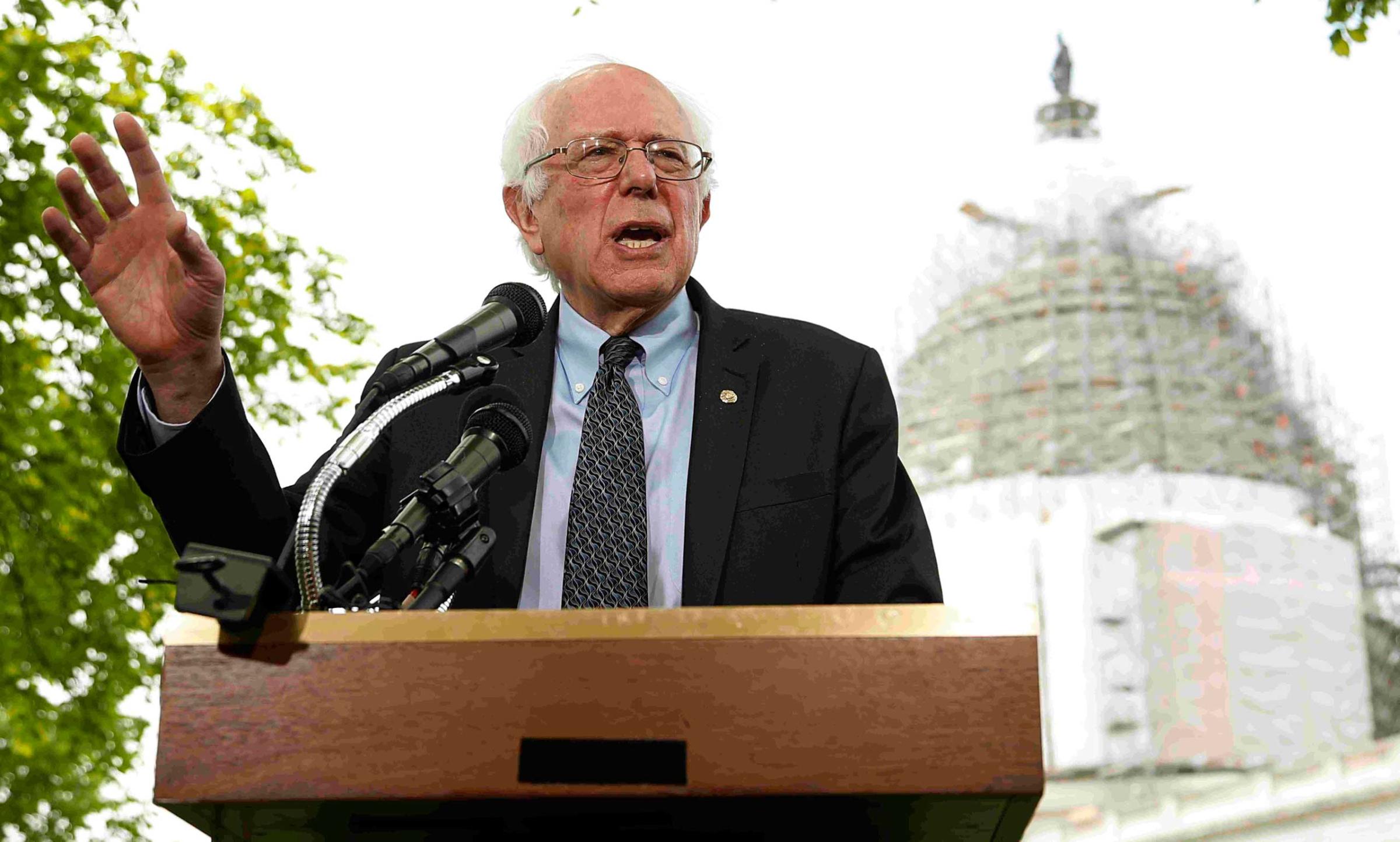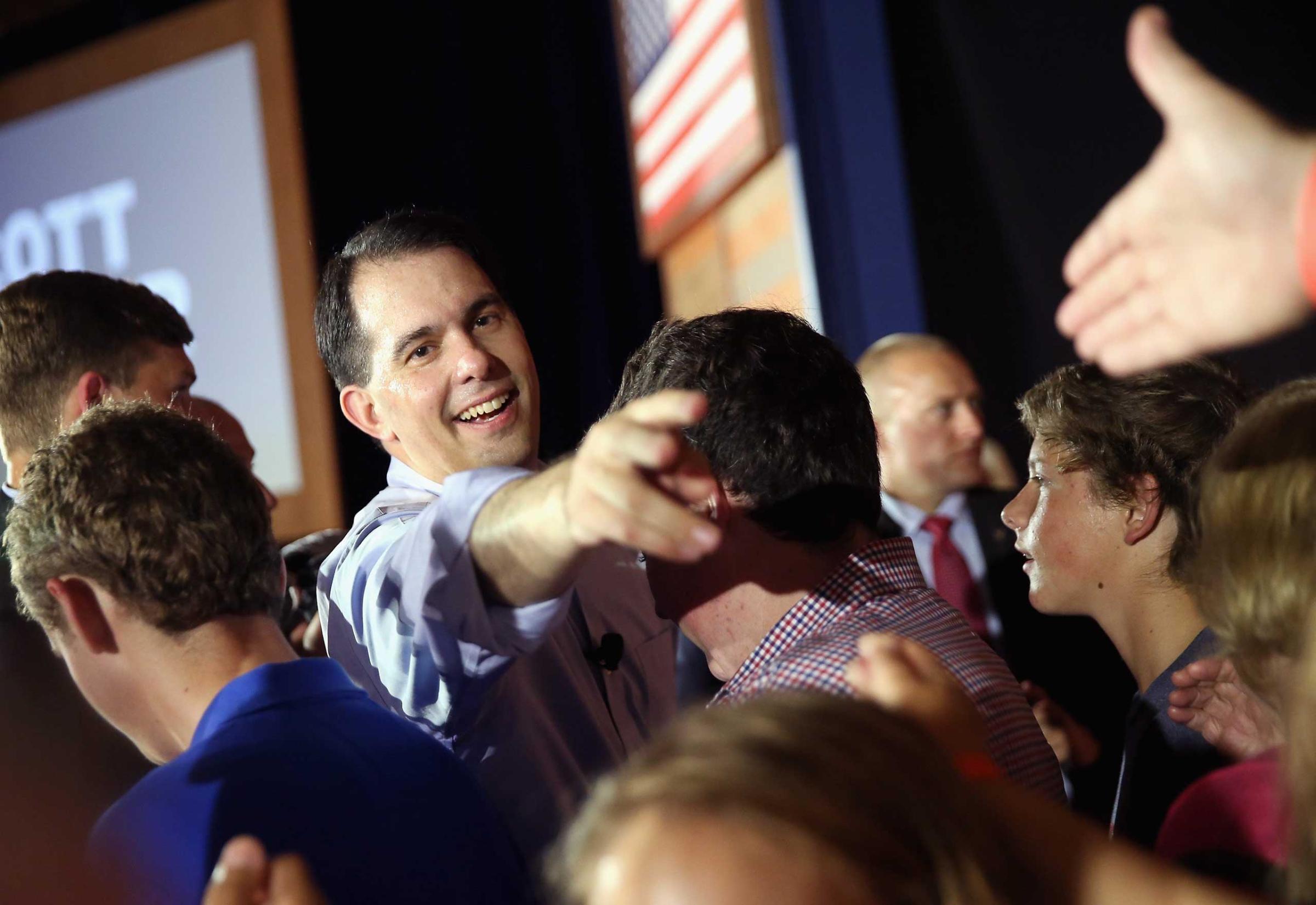
(LAS VEGAS, NEV. SORT OF.) — It turns out I have exactly the same tolerance for virtual reality as I do for presidential debates: After about 30 minutes, I get vaguely nauseous and have to step away.
Tuesday’s Democratic Debate, sponsored by CNN and Facebook and hosted at Las Vegas’ Wynn hotel and casino, was available to viewers in several different forms: On TV, over the Internet, and, yes, in virtual reality (VR).
Watching Hillary Clinton square off with Bernie Sanders and the rest in VR was free, but required a special Samsung headset. A special Samsung headset I happened to have sitting around my apartment. So I figured, why not tune in?
Streaming Tuesday’s debate in VR was CNN’s latest high-tech hijink, a follow-up to its oft-mocked experiments with “holograms” back in 2008. The operation used multiple cameras with a viewing angle of about 180°, offering close-up views of the candidates, the crowd, and yes, of course, Anderson Cooper.
I couldn’t pick which viewpoint I wanted at any given time, but the vantages were more free than TV’s tightly framed shots, letting me shift my gaze from Clinton to Sanders to whoever else those other people were at will, just like being in the front row at the Wynn. It was engrossing, if limited by my headset’s less-than-stellar resolution. Eventually, that’s what got me to head back to good ol’ TV: I could sort of tell the difference between the candidates, but the graphics were so poor they looked more like faceless avatars than human beings.
So is VR the future of television? Not even close.
Virtual reality’s biggest problem is that it’s isolating. Watching Tuesday’s debate with a clunky headset strapped to my face meant I couldn’t share the experience with my real-world friends — or make awful jokes on Twitter all night with my online ones. VR is lonely, and TV is best when it’s social. (Another use case may lie in live sports. Especially those better in person than on TV. I’m looking at you, hockey.)
What’s more, CNN’s debate wasn’t really true VR. There are two flavors of virtual reality. The first involves using a special camera to record wide-angle video of a live event, then beaming that content to viewers’ headsets. Like I did Tuesday night, viewers can then look around at whatever they want. It’s novel for a minute, but you quickly find your gaze locked at whatever the producer or director would have put in frame anyway.
This approach is basically taking video as we know it today and slapping it onto a new medium. That’s boring. It’s what we’ve done time and time again when new platforms arise: It feels like online publishers are only just recently tapping into the unique powers of the Internet, for instance, rather than treating it like a dumping ground for stuff that looks a lot like old-school print or video content. VR television will be like 3D TV: A decent enough idea on paper, but never a commercial hit.
But that doesn’t mean VR won’t be a thing. Far from it.
Where virtual reality shines is in experiences built from the ground up for the new medium. One VR demo I’ve tried turned me into a deep sea diver; I met a gigantic blue whale that really did feel alive. Another was essentially Microsoft Paint but in three dimensions, creating a new artistic medium altogether. And a third put me on a skyscraper’s ledge with such a convincing level of danger that my brain reflexively told my feet to back up, you idiot, lest I plunge to an untimely demise.
There’s yet another VR experience, however, that’s more predictive of where the industry is headed. Oculus Story Studio, the content wing of a leading VR hardware company, is making experimental and Pixar-worthy short films for the new medium (Indeed, it counts several Pixar veterans among its staff). The job is harder that it sounds. One lesson the team has learned, for example, is that straight cuts, a staple in filmmakers’ toolkits, are far too jarring for VR. That seems minor, but it underscores how content creators will have to think up entirely new ways of storytelling that jive with VR’s capabilities — and its limitations.
We’re coming up on a make-or-break year for virtual reality. VR headsets, previously meant only for hardcore hobbyists, are soon hitting store shelves at reasonable prices. (The Samsung unit I have is $99, plus the cost of a phone that doubles as the screen.) With the hardware more accessible, the technology’s future lies in content. Will consumers find a reason to buy in? That’s up to the creators out there — but livestreamed political debates seen at low resolutions won’t cut it.
See the 2016 Candidates' Campaign Launches



















More Must-Reads from TIME
- Donald Trump Is TIME's 2024 Person of the Year
- Why We Chose Trump as Person of the Year
- Is Intermittent Fasting Good or Bad for You?
- The 100 Must-Read Books of 2024
- The 20 Best Christmas TV Episodes
- Column: If Optimism Feels Ridiculous Now, Try Hope
- The Future of Climate Action Is Trade Policy
- Merle Bombardieri Is Helping People Make the Baby Decision
Contact us at letters@time.com